What Are FPV Drones?
FPV is the abbreviation of “First-Person View,” describing a breakthrough in drone flying that has given a whole new dimension to flight. Whereas the more recognizable version relies on a ground-level view in piloting, FPV enables an operator to see just what this drone sees through its onboard camera by transmitting live video. Like taking wing, just through the eyes of your drone! If you’re fascinated by technology that can merge the real-world experience with a virtual perspective, FPV drones will feel nothing short of revolutionary.
Understanding FPV (First-Person View)
So, what precisely does FPV mean? While flying an FPV drone, you are not looking at it from the ground. Contrary to this, you are inside the drone and work out control through a feed that streams right onto a pair of FPV goggles, a screen, or your smartphone. The camera on the drone gives you a direct “pilot’s-eye” view, which accounts for an immersive flying experience.
This is important because, for the first time, it fundamentally changes the way that people operate drones. Traditional drones could very well have onboard cameras, but with FPV drones, that live feed becomes your primary tool for flying.
How FPV Drones Work ?
An onboard camera is at the core of an FPV drone. This camera transmits real-time video to the pilot’s goggles or monitor for an immersive first-person view.
- Onboard Camera: Captures the drone’s perspective.
- Video Transmitter: Sends the camera’s video feed to the goggles or screen.
- FPV Goggles/Monitor: Receives and displays the live video feed to the pilot.
The system should also have low latency so that the pilot can make instantaneous decisions or adjustments in real-time. This is very important during high-flying sequences, like drone racing, where even the slightest lag can result in a crash.
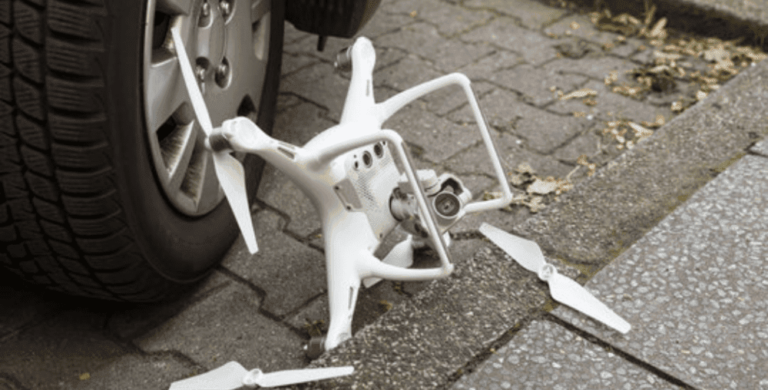
FPV Drones vs. Traditional Drones
In fact, at first glance, FPVs and ordinary drones are not very different, but the feeling of flight is different. Usually, the pilots of ordinary drones rely on a line-of-sight system and use their onboard camera almost exclusively for photo or video capture. On the contrary, in FPV drones, the onboard camera becomes the primary means of control, offering a real-time immersive view from the drone’s perspective.
Another key difference is that traditional drones are much easier to fly than their FPV counterparts, especially for people who have just started flying. This is because FPV drones completely rely on first-person control, while traditional drones have a more gradual learning curve. The difference in this regard constitutes a dividing line between these two kinds of drones for most users who might have to choose between them.
Benefits of Flying FPV Drones
FPV drones offer several significant advantages:
- Immersive Experience: It’s like being inside the drone flying through the skies; for pilots, especially, this experience may be pretty thrilling if they get a kick out of adrenaline.
- Improved Control and Precision: Since you are seeing exactly what your drone is seeing, it’s much easier to make quick adjustments and fly through tight spaces.
- Aerial Photography: FPV drones let you capture stunning footage with dynamics that would have been hard to capture with a traditional drone.

Drawbacks of FPV Drones
While FPV drones offer an unmatched flying experience, they do come with some challenges:
- Difficult for Beginners: In first-person view, it will be very tricky for any novice pilot to maneuver correctly because it requires practice for coordination, especially if one needs to go through an obstacle.
- Safety Concern: Situational awareness may be easily lost because you always look at your screen or goggles. It is good that a companion keeps an eye on the skies for possible dangers.
Types of FPV Drones :
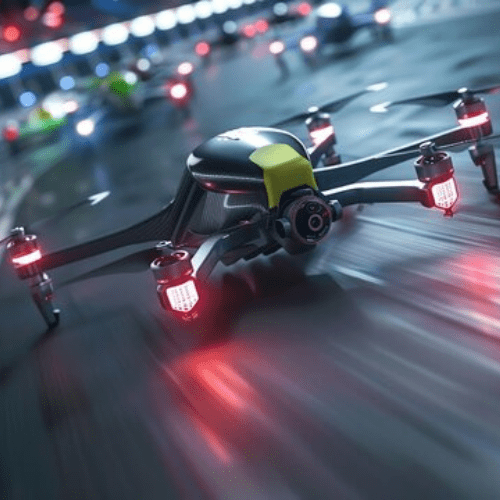
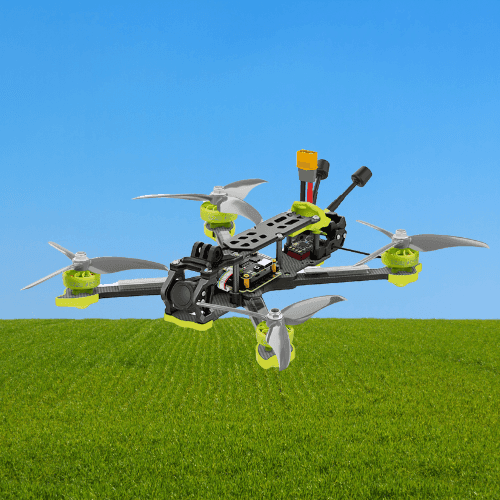
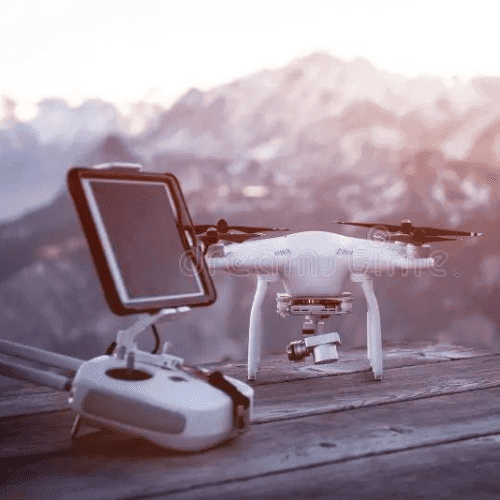
Racing Drones: These are light and speedy, with designs that consider speed and agility appropriate for competitive racing.
Freestyle Drones: Designed for aerial tricks and acrobatics, these drones are perfect for pilots who love to show off their flying skills.
Cinematic FPV Drones: Filmmakers and videographers dream of capturing smooth, quality footage from unique perspectives easily with Cinematic FPV drones.
FPV Drone Racing
One of the most incredible things people do with FPV drones is racing. FPV pilots make their way through a track littered with obstacles in drone racing, trying to complete it as fast as possible. That is a genuinely high-speed sport, which requires precision and quick reflexes.
Racing drones are built for pure speed and agility. Pilots in a race use specialized equipment that reduces latency in the drone’s video feed so they can react instantaneously to any change in the environment and avoid crashes at high speeds.
FPV Drones for Aerial Photography and Videography
FPV opens up a world of creative possibilities for photographers and filmmakers. Knowing what your drone sees allows for innovative, unique camera angles and dynamic shots impossible with traditional means. You can thread through tight spaces, capture sweeping landscapes, or chase fast-moving subjects while keeping your camera stable.
Legal Considerations for FPV Drone Pilots
Before you begin flying an FPV drone, studying local drone regulations would be a good idea. Sometimes, regulations will differ depending on where you are, how high you can fly, or if there’s special regulation for night flying or flying in public areas. Always research your region’s laws regarding flying a drone to avoid potential fines or any other legal entanglements.
What Equipment Do You Need to Fly FPV Drones?
To start flying FPV drones, you’ll need more than just a drone. Here’s a list of essential equipment:
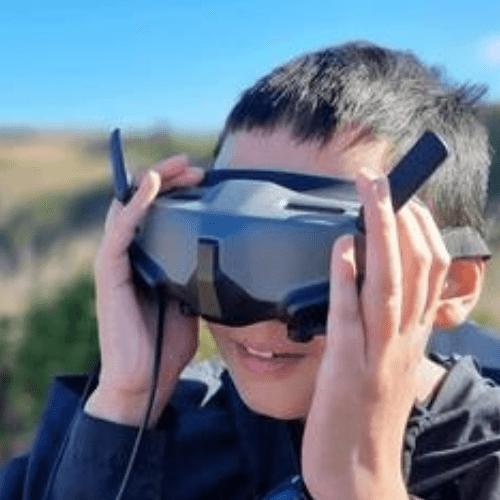
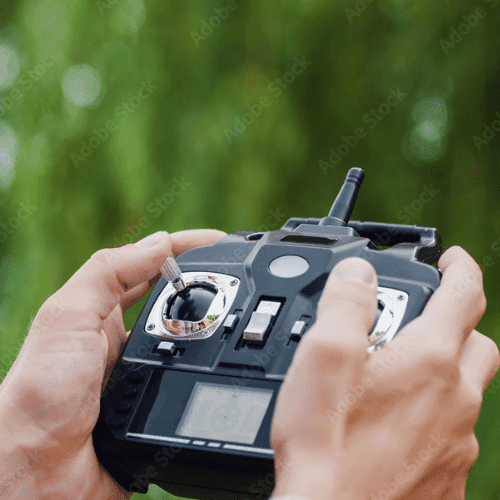
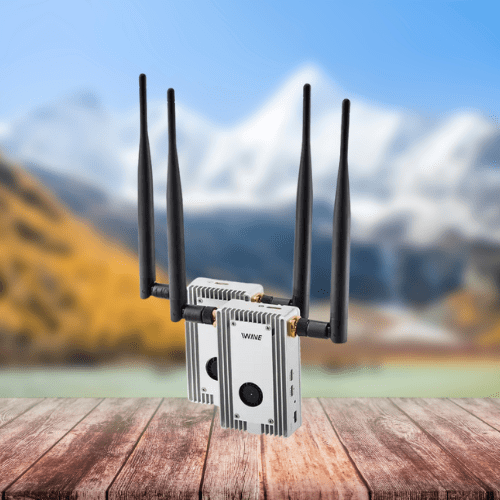
FPV Goggles: These provide the real-time view from the drone
Remote Transmitter: This is the controller used in piloting the drone.
Video Transmitter and Receiver: To receive the live feed on your goggles or screen without any delay.
Other Accessories: Extra batteries, propellers, and a signal booster improve the flying experience.
Tips for Getting Started with FPV Drones
If you’re totally new, stick with a more forgiving FPV drone. Most companies offer new flyers FPV drones that are easier to handle and should not break easily after slight crashes. Consider using a drone simulator to hone those skills before taking to the skies.
Common Issues and Troubleshooting for FPV Drones
FPV drones can face some technical challenges:
- Loss of Signal: If the video transmission is interrupted, it may be difficult to control the drone.
- Battery Life: Most high-performance drones have abysmally low battery life, so always fly with extra batteries.
Advanced FPV Flying Techniques
One can do Advanced flying maneuvers once they feel comfortable with basic flying, including flip, roll, and power loop. All these methods require precise timing and control but reward flights with more thrill and generally spectacular visuals.
FAQS
What is FPV?
FPV stands for “First-Person View,” in which the drone is piloted from the drone’s perspective through an on-board camera.
How does FPV differ from a standard drone?
An FPV drone offers a live video feed from its camera, allowing immersive flying, whereas normal drones are piloted from the pilot’s ground perspective.
What are FPV drones used for?
FPV drones have applications in drone racing, aerial photography and videography, and recreational flying, among other areas. In recent years, they have also begun to be used in the military field.
Is flying an FPV drone hard for beginners?
Yes, flying FPV drones is thought to be a little tricky due to first-person control; it takes time for someone to practice
- Eco Gadgets for Home: 10 Smart Gadgets for a Greener Lifestyle”
- Out of Cell Service or Wi-Fi After Hurricane Milton? Here’s How to Send Text Messages via Satellite
- Apple’s New AirPods Update: Control Your iPhone with Just a Nod
- 4 Tools for Recording Audio on Windows 11
- Artificial Intelligence In Game Development Today
- Internet of Things and Smart Cities: Tech Meets Urban

